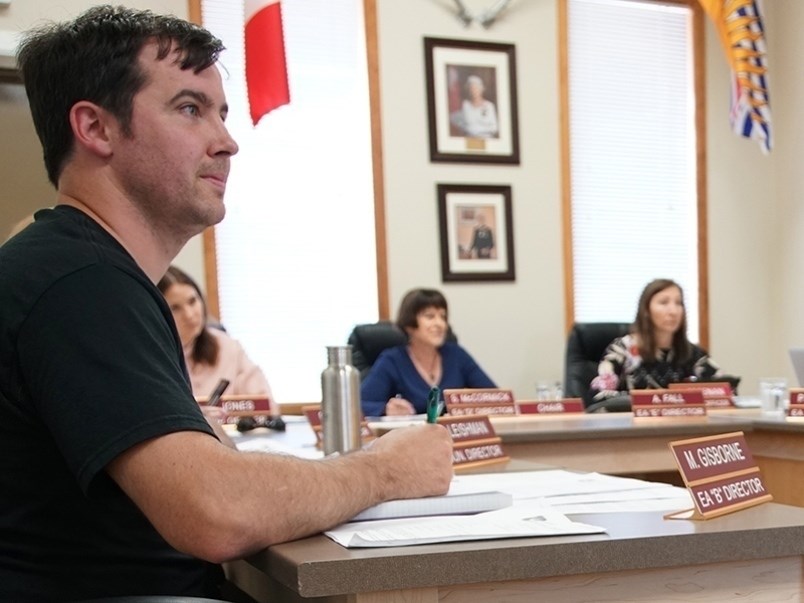qathet Regional District’s (qRD) planning committee is recommending the regional board concur with a proposal for a telecommunications facility to be located in Electoral Area C, south of City of Powell River.
At the February 9 planning committee meeting, regional directors heard about a proposal to locate the tower at 2658 Weldwood Road, subject to proof of a successful notice of intent application to the Agricultural Land Commission (ALC) for the placement of fill or removal of soil, and completion of a successful public consultation process.
Directors heard a presentation from Chad Marlatt of Cypress Land Services, a consultant for Telus. He said Telus is actively trying to improve wireless services along the Sunshine Coast. He said this is one of about 15 projects Telus has on the go.
“This particular project is for mobile service improvements to Lang Bay, Brew Bay and down by Stillwater,” said Marlatt. “It’s a 70-metre tower we’re proposing, up above the hydro lines. It’s on a private property. Most of the property is treed with a clear area in the middle.
“Visually, the tower is not too disruptive to neighbouring properties. It’s fairly well set back from most homes.”
Marlatt said public consultation has been completed and there was one enquiry that was supportive of the project. He said community members have been heard from during the last couple of years, wanting improved services.
“It’s a good thing for the community,” said Marlatt.
Telus representative Doug Anastos said he has heard for quite a while about limitations of service along the Sunshine Coast. He said there has also been a site in Lund identified and Telus is planning to proceed with it this year. He said there will be two or more proposals coming around the bend.
“We’re looking at likely four macro-cell sites – cell towers – to provide a very good level of service to this area throughout the qRD,” said Anastos.
Electoral Area B director Mark Gisborne asked about the total footprint for this initiative at that site. He said it looks like the fenced-in area is 20 by 20 metres. He asked if that was correct.
Marlatt said that was the full footprint.
“It’s a fairly large tower so it’s a fairly sizable foundation,” added Marlatt.
Gisborne then asked what makes this property ideal for the tower.
Marlatt said it is a combination of the elevation and the proximity to the areas it is to service.
“The closer we can be to where people are using their devices, the better,” said Marlatt. He said the primary function of the tower is cellular service and internet access is offered as well, which is a secondary benefit.
Gisborne said he took a look through the application paperwork, and acknowledged that better cellular service was needed south of town. He said, however, it might be a matter for the agricultural advisory committee to consider. He said that 20 by 20 metres of agricultural land reserve (ALR) property is being covered by the utility tower installation.
Gisborne said the Electoral Area C official community plan (OCP) had policies relating to the ALR. Quoting from the plan, Gisborne said non-agricultural uses, including transportation and utilities rights of way, which would consume ALR land, are strongly encouraged to locate outside the ALR.
Gisborne said he was wondering why the planning committee seemed to be okay with the recommendation when the OCP states it shouldn’t be on ALR lands. He said he wasn’t sure the planning committee should be ruling on the matter because the regional district has an agricultural advisory committee.
Gisborne said a cell tower is being proposed to go on ALR land and concrete will be laid down on agriculture lands.
“I would at least expect it would go to the agricultural advisory committee, so that way, it can fulfill its purpose,” added Gisborne.
Manager of planning service Laura Roddan said there is no ALC application required for a telecommunications tower because they are exempt. She said the ALC has no jurisdiction over federally regulated telecommunications towers.
Gisborne said he thought the matter should go before the agriculture advisory committee and made a motion to that effect. The motion didn’t have a seconder so it failed.
The planning committee carried a motion to send the matter to the regional board for endorsement and it carried, with Gisborne opposed.



